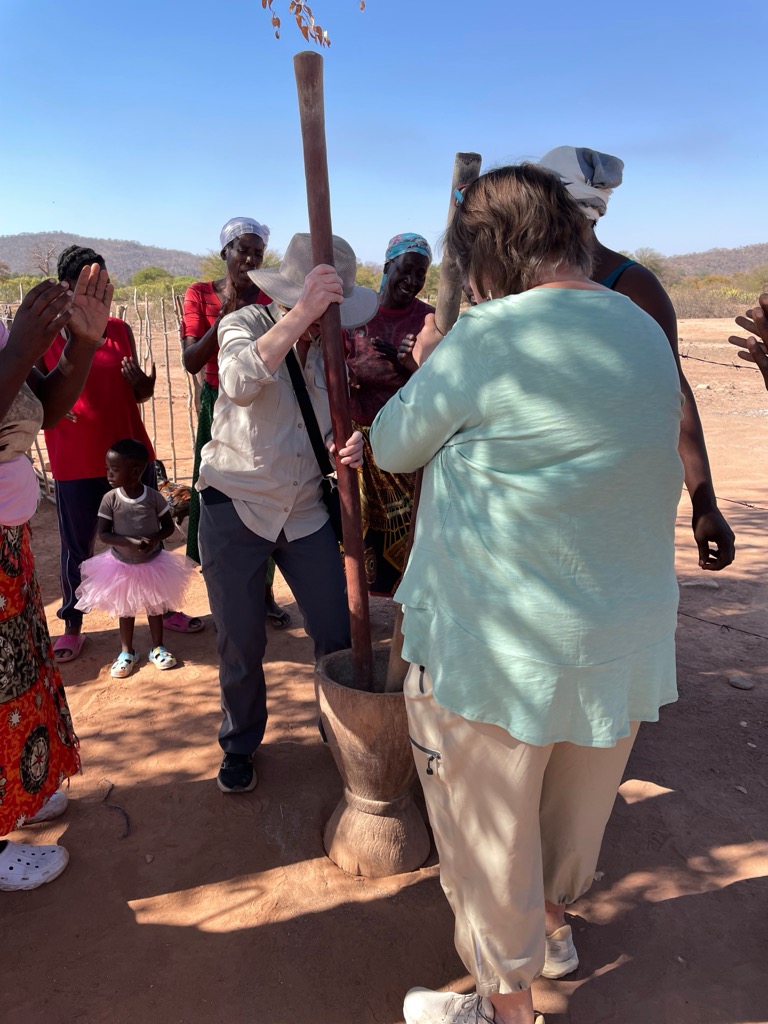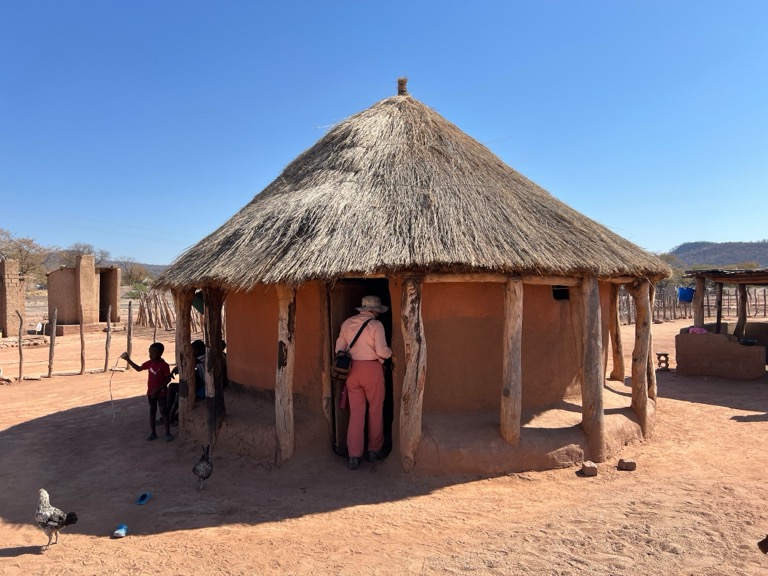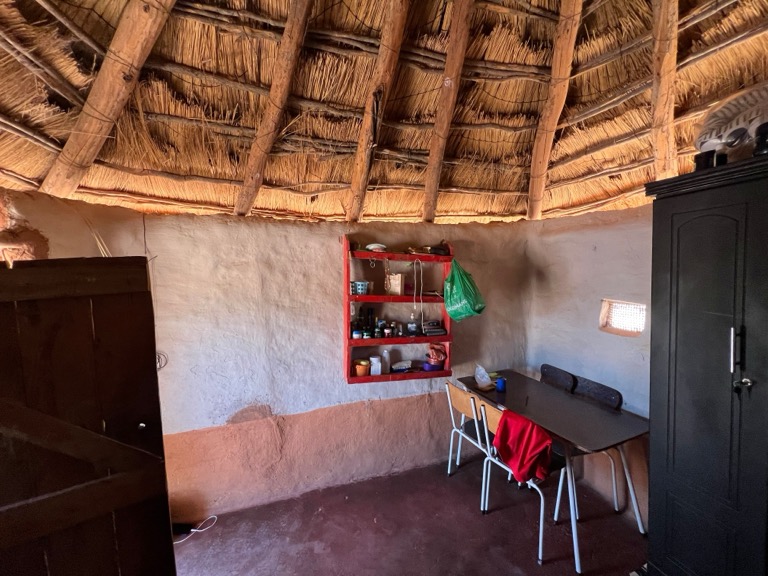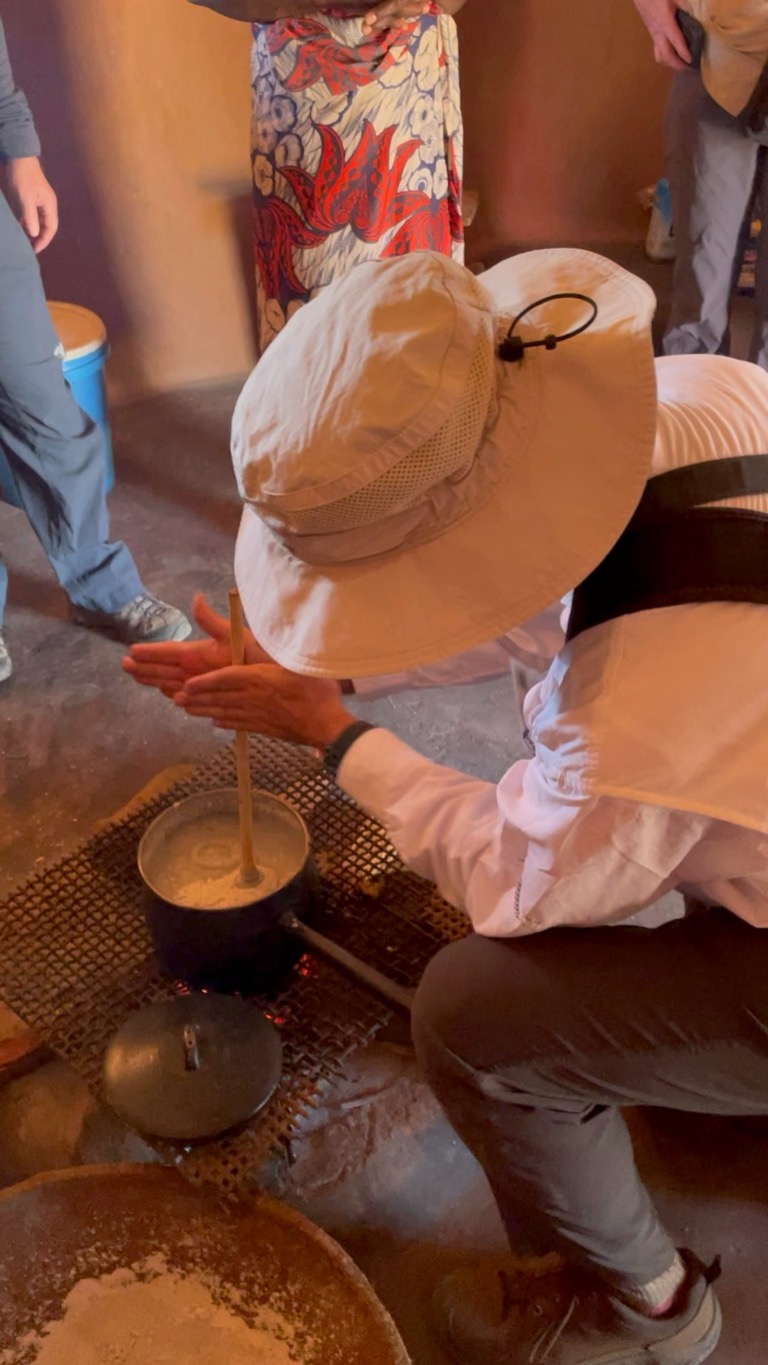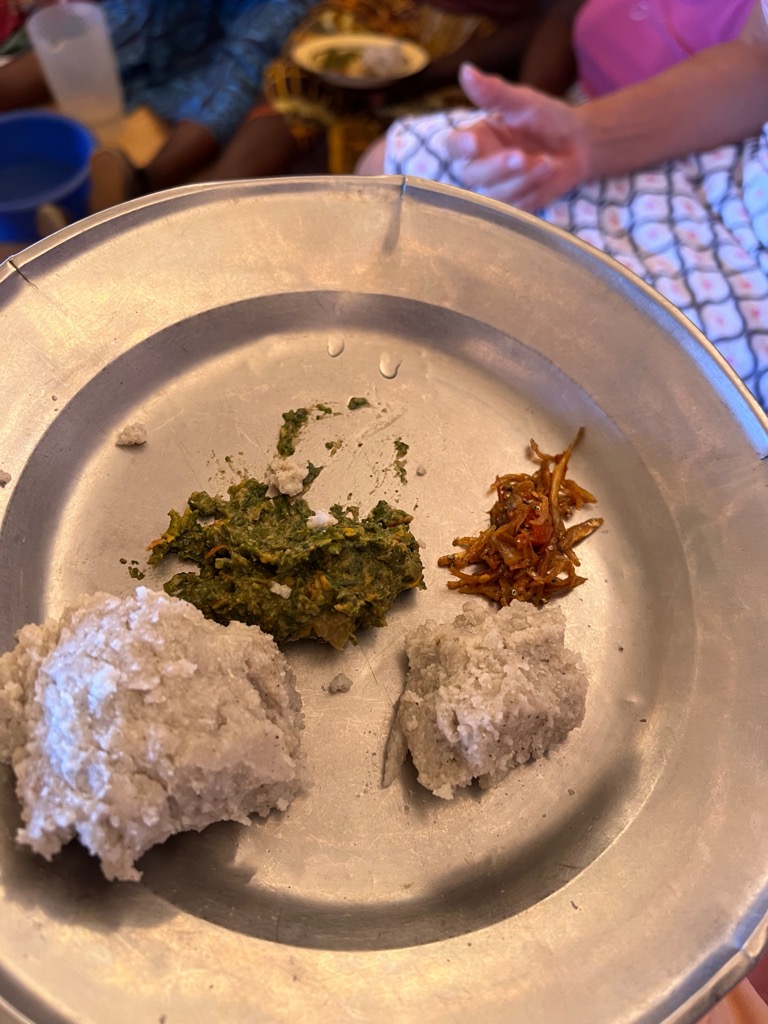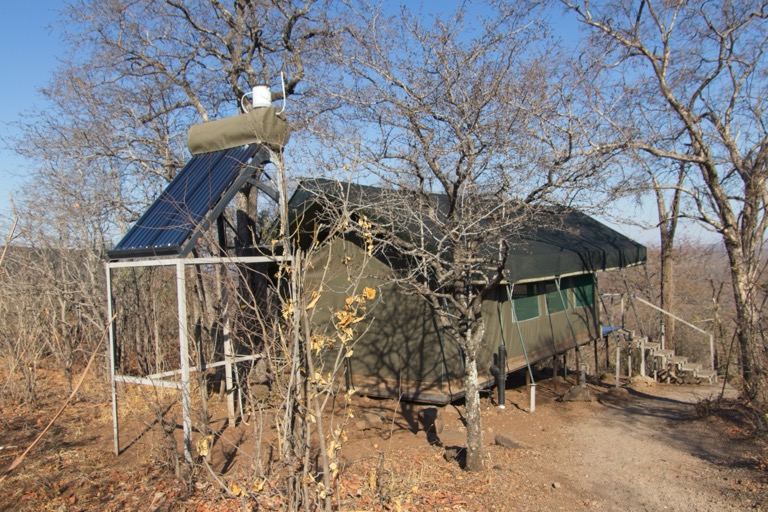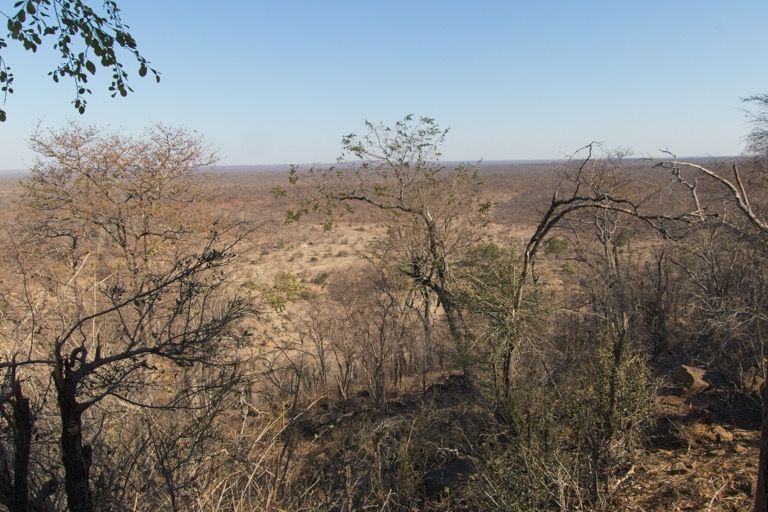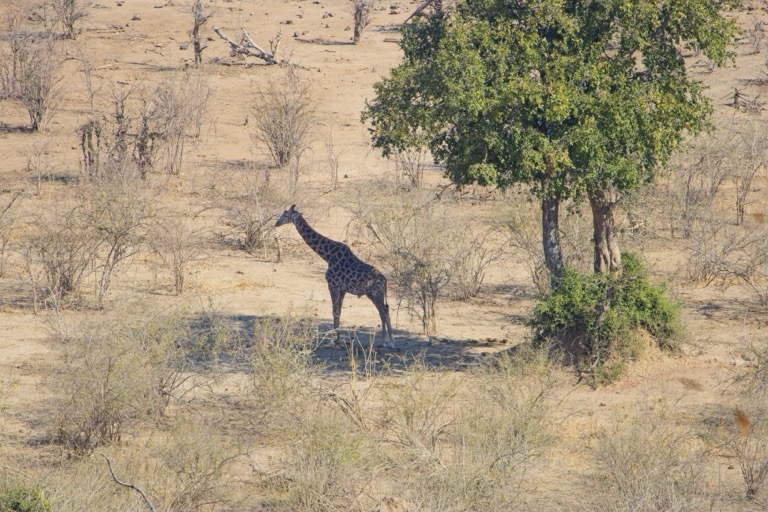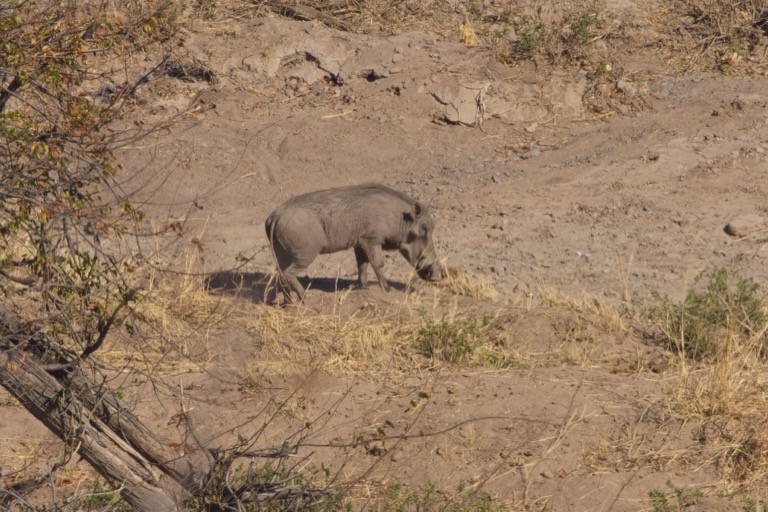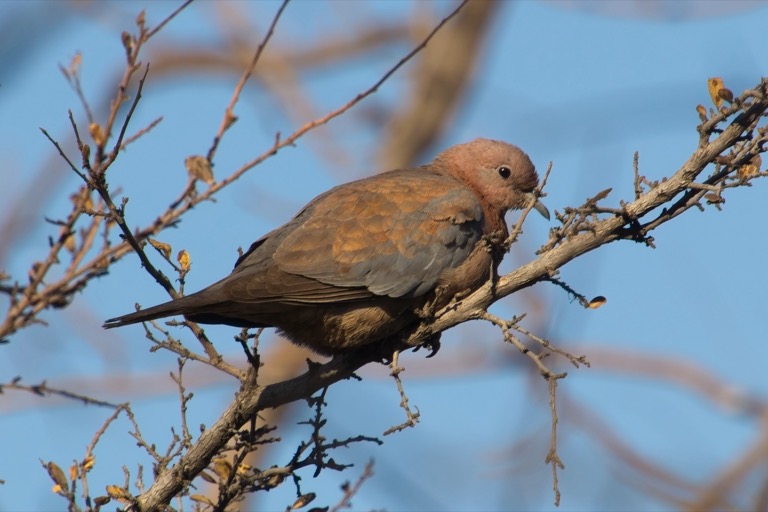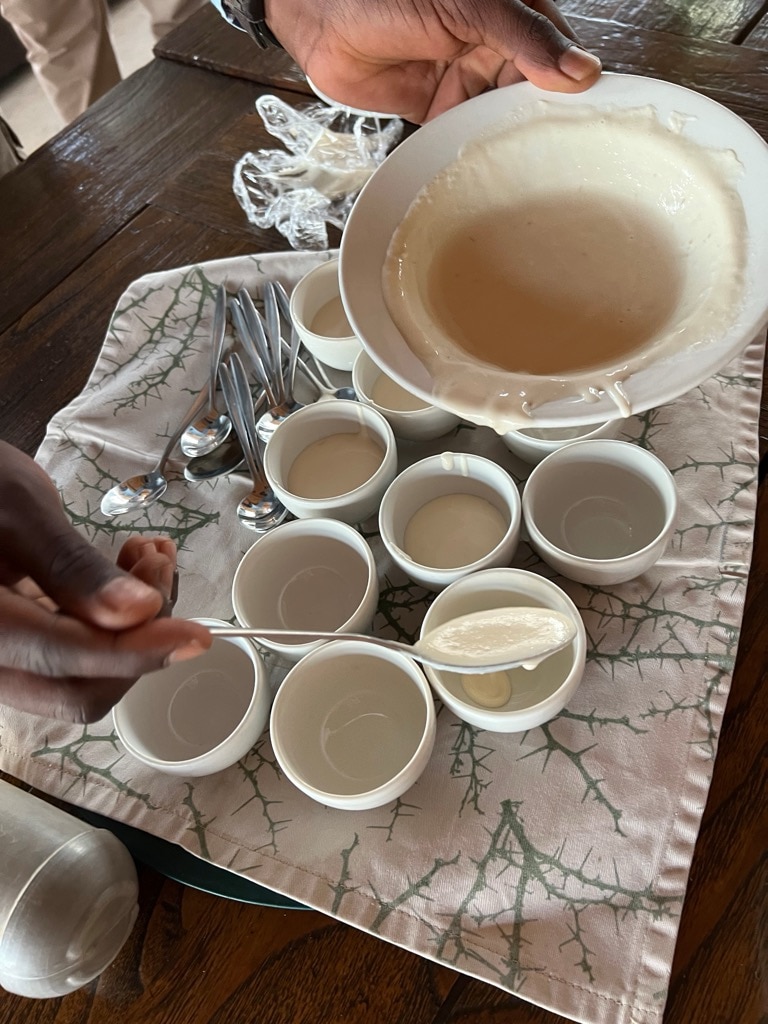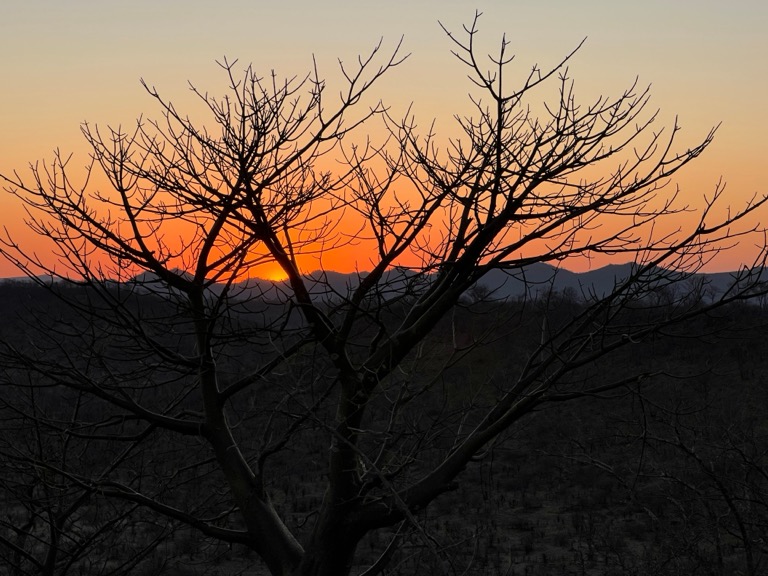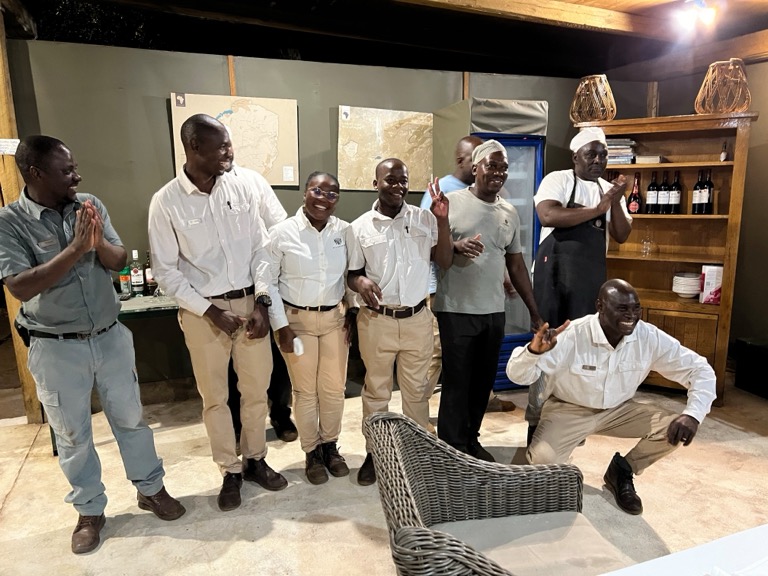on
Ngamo village
We start the day with a 6 am wake up and breakfast starting at 6:30 am. We didn’t sleep all that well, as there was something under our tent from 2-5 am, grunting. Talking with the guide that picked us up, he looked at the tracks and thought it was a honey badger.
After breakfast, our program director showed us a dried baobab fruit. It’s fairly large and has a thick shell. He asked me to smash it on the ground to open it. Inside are small irregular blobs about 1/2 inch along each edge. There is a seed inside each one of these blobs. You can make a yogurt-like food from the blobs. Elephants and other animals like these fruits as well.
The tour company we use emphasizes a day in the life of the locals. Before going to the village we shopped for our gift to the people. Our program director divided us into 6 groups and gave each group a shopping list. We purchased things like corn meal (in 20 pound bags), cooking oil and dried fish.
We were met by the headman of the village. After greeting him we looked around. The buildings were all small, about 1 room but there were a number of buildings. We went over to one part of the compound where women were pounding millet. Two women worked together at one station. The women all sang to keep the rhythm of the work. We were invited to help and took turns. They do this twice a day, taking 30-40 minutes each time.
We then toured a children’s bedroom and the indoor kitchen (There was also an outdoor kitchen).
We were invited to help with preparing the meal. The ground millet is mixed into water and cooked until quite thick. Our host demonstrated the mixing process and then invited us to help with it. I took a turn.
We then went to a meeting room which held the 16 of us and 10-12 villagers. The villagers served some food, including the cooked millet, pumpkin leaves with homemade peanut butter. They also cooked up some of the spiced dried fish.
The traditional way to eat is to take some of the millet in your hand, form a ball and then flatten it a bit and use that to pick up some food and eat it.
Although English is the official language of Zimbabwe, the headman’s English was not up to long discussions and younger village men translated for him. We discussed school, health care, role of women, and employment. Some villagers are employed, but it is still mostly a subsistence economy. They have a plot of land that is a mile away near the river, so it’s irrigated, they grow most of the food they eat there. Some of the men work outside the village, one worked at the coal mine at the entrance to Hwange National Park. He works 26 days out of the month, and nets $200 per month after room and board. We then presented our gifts before we left.
We returned to the camp and had a late lunch. Then there was time to take a shower and work on photos. Kashawe Camp is on a ridge overlooking a wide valley. Our tents had a porch that overlooked the valley.
You can see the solar water heater for our tent. The water is plenty hot in the afternoon when we take our showers.
At tea, we sampled the “yogurt” the staff made from Baobab fruits. It was really good. They may have mixed some vanilla into it.
We didn’t really have a game drive tonight, just a short drive over to a scenic spot to watch the sunset and have a drink and snacks (they called it a sundowner).
The staff performed a short song and dance show after dinner as this was the last night.
At each of the camps where we stayed the camp manager was a woman. When we asked about this they said men would rather become guides. They also said men have no patience with the paperwork.
